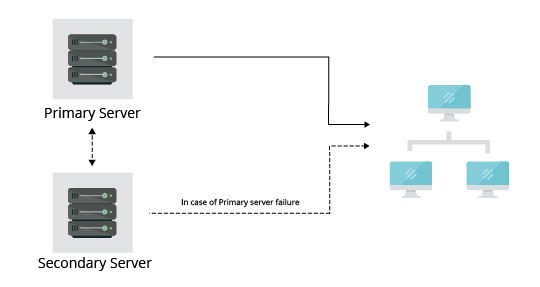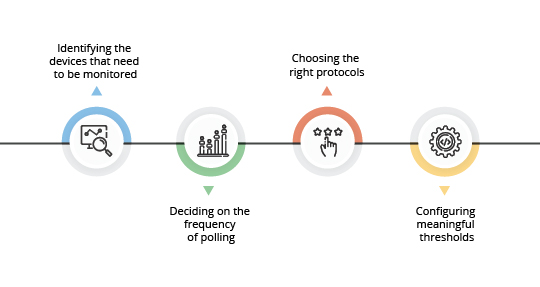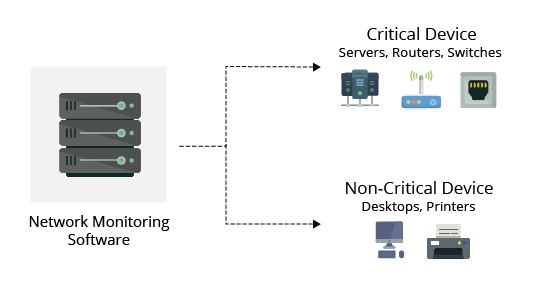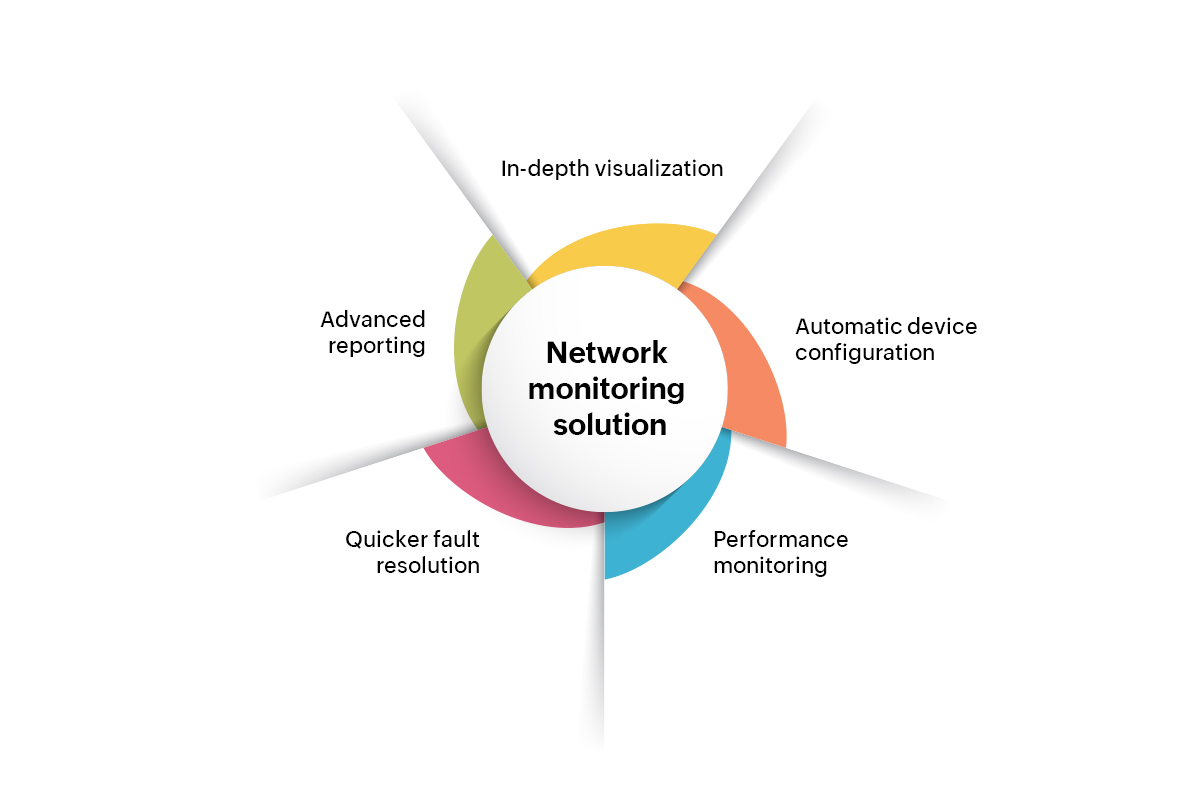Flexibility: For the customizations in network monitoring
Data becomes useful only when it is presented clearly to the right audience. It is important for IT administrators and users to know about critical metrics as soon as they log in. A network monitoring software should be flexible enough to provide an at-a-glance overview of the current status of your network, with critical metrics from routers, switches, firewalls, servers, services, application, URLs, printer, UPS and other infrastructure devices. Network monitor's support for widgets to monitor the required specifics and real-time performance graphs can help administrators quickly troubleshoot problems and monitor devices remotely.
High availability: To ensure uninterrupted connectivity of a network monitor
What happens when your trusted network monitoring tool running on a server crashes or loses network connection? You will want to be alerted on this and also have the situation automatically remedied using a back-up/stand-by of another twin real-time network monitor application installation. High availability refers to the continuous availability of a network monitoring system. Every single network incident - device sickness, unhealthy bandwidth levels, DoS attacks etc., should be immediately brought to your notice so that counter-measures can be taken immediately.
Failover and fail-back functionality ensures an always-monitored network environment by utilizing a secondary standby server. If a failure occurs in the primary server, the secondary server is readily available to take over and the database is secure. This ensures a hundred percent network and device uptime.

Benefits of the Failover system while monitoring network:
- Instantly recognize primary server failure.
- Immediate notification via email in event of a primary server failure.
- 100% uptime and uninterrupted network management.
- Automated, seamless switching between the Primary server to Standby server and vice versa.
Scalability: To extend the scope of network monitoring
Enterprises tend to expand with time to cope with the rising network demands and business operations. The constant addition of new devices to the network requires a network monitoring software that spots and adds them as soon as the devices are introduced to the network. Network monitors that are future-ready and scalable to any network infrastructure is what you need for the successful network monitoring.
On an Enterprise level, a network monitoring solution should allow you to deploy multiple probes in the same site or same network to distribute the monitoring load and offer enhanced scalability.
Security: To prevent unauthorized network access
The increased size and complexity of networks make it hard for the network admins to keep track of files and folders in the network, paving the way for malicious attacks or data breaches. It is a network monitor that should keep the network away from such threats. To achieve network security, network monitor lets you control the access level of individuals in the organization to the network monitoring tool, on a role basis. This prevents unwanted changes to the network and helps network admins stay on the same page. A network monitoring software should also ensure the authenticity of product files that are associated to the tool and external files that are originated from external sources, by conducting periodical checks to identify tampered files.
Multi-vendor compatibility: For the effortless enterprise network monitoring
In today's hybrid network environment, where multiple vendors are into the play, a network monitor extending support to all the major vendors and device types is crucial especially for enterprise network monitoring. Each vendor will have unique OIDs which creates the need for multi-vendor backed network monitor to collect performance data of the network devices. For instance, OpManager, a potent network monitor, offers support to major vendors such as Cisco, HP, Huawei, Hitachi, IBM, and more.



